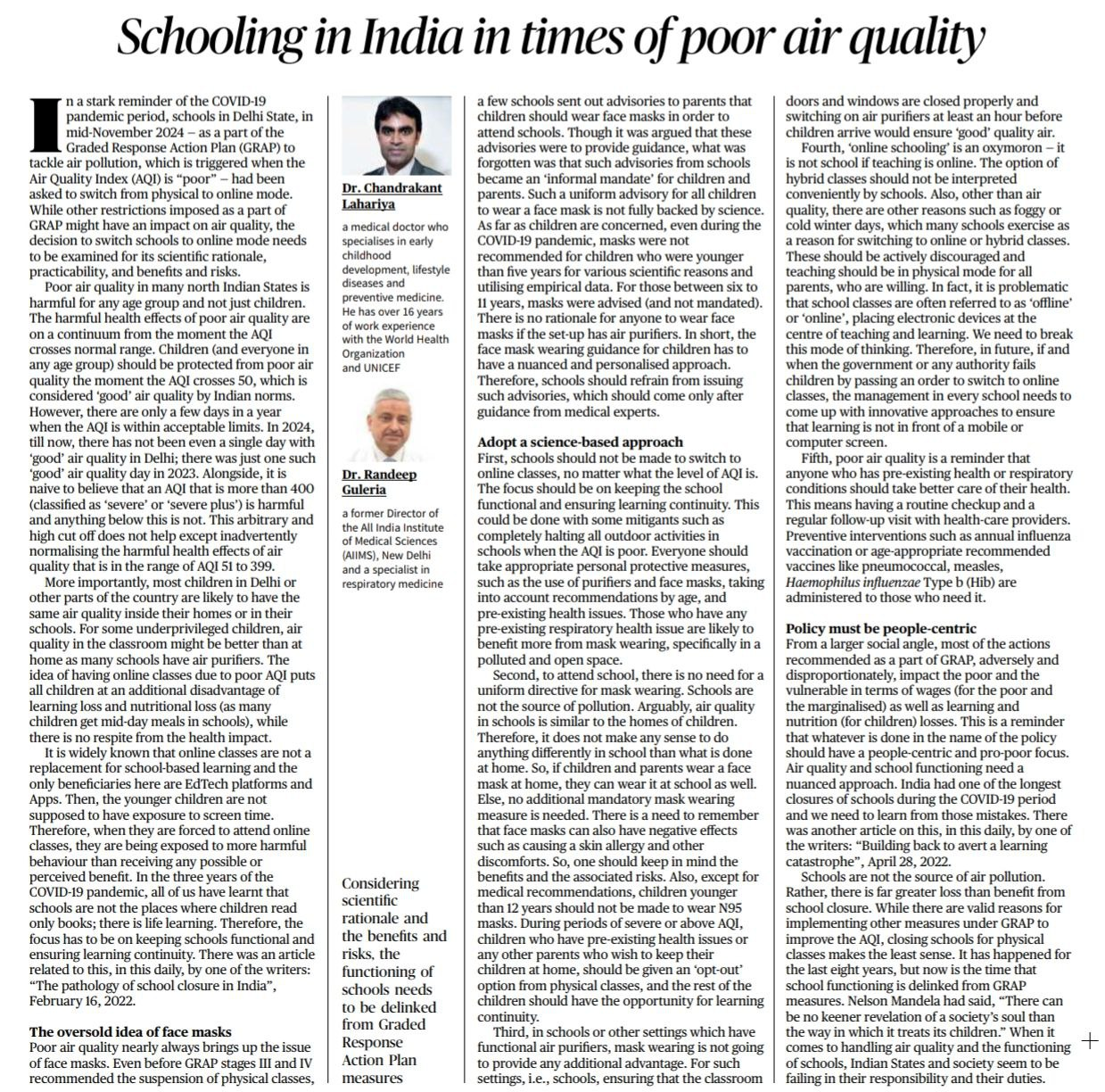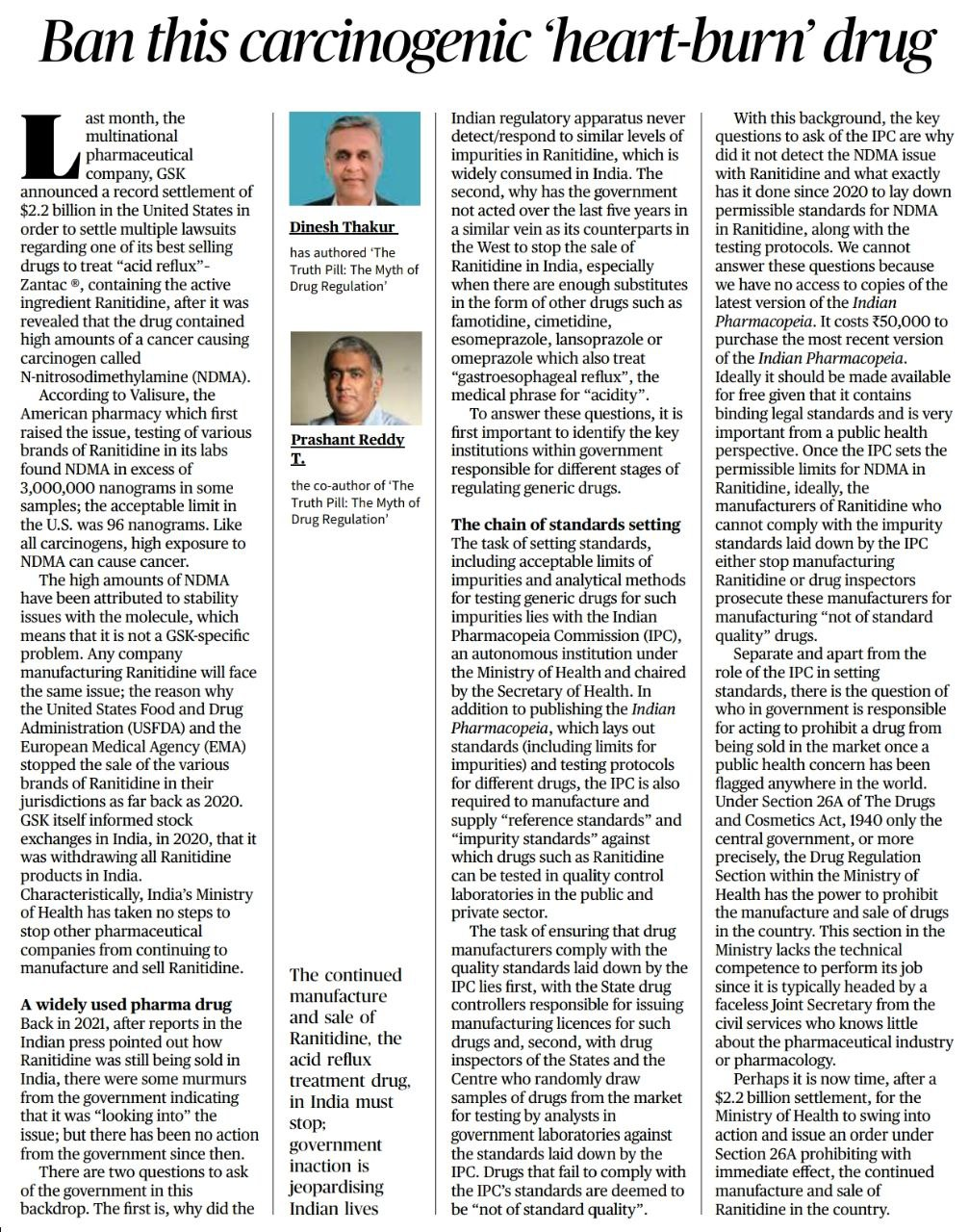1. Addressing Schooling Challenges Amid Poor Air Quality in India
Introduction
- Poor air quality in North Indian states, especially in urban areas like Delhi, has raised health concerns for all age groups, particularly children.
- Recent measures under the Graded Response Action Plan (GRAP) have included school closures during hazardous AQI levels, prompting debates on their scientific and social impacts.
- Children, being vulnerable, require balanced solutions that consider health risks, education, and equity.
- Air Pollution’s Health Impact on Children
- Harmful effects of poor air quality are continuous and not limited to extreme AQI levels.
- Children are more vulnerable to pollution due to developing lungs and higher outdoor activity levels.
- Exposure to AQI above 300 (classified as severe) has significant adverse health impacts.
- Challenges of Online Schooling as a Mitigation Measure
- Equity Issues: Many children from underprivileged backgrounds lack access to online education tools like devices, stable internet, and air purifiers.
- Learning Gaps: Online learning widens disparities in learning outcomes, particularly in marginalized communities.
- Health Concerns: Physical inactivity due to online learning exacerbates other health risks.
- Recommendations for Schools and Policy
- Scientific Approach to Mask Use: Masks for young children lack strong empirical support and require nuanced guidance based on age and health status.
- Adopt Mitigation Strategies:
- Install air purifiers and ensure well-ventilated classrooms.
- Schedule outdoor activities during safer AQI levels.
- Use protective measures for vulnerable children.
- Community-Centric Policies:
- Ensure policies benefit marginalized groups and provide solutions for both health and education access.
- Avoid ad-hoc decisions and develop a sustainable, long-term strategy for managing air quality crises.
- Role of Schools
- Schools must function as safe spaces by implementing protective measures such as air purifiers, vaccination drives, and timely healthcare interventions.
- Emphasis should be on holistic, inclusive approaches to learning rather than sudden shifts to online education during pollution spikes.
Conclusion
Poor air quality in India is not only a health emergency but also a social and educational challenge. A policy framework based on science, equity, and community welfare is essential to balance children’s health and education during environmental crises. Schools should be equipped with long-term solutions like better infrastructure and awareness rather than resorting to stop-gap measures like closures or online learning.
Practice Mains Question |
Q: Air pollution has a multi-faceted impact on children, particularly in urban areas. Discuss the challenges posed by poor air quality on schooling and suggest policy measures to address them. (250 words) |
2. Need to Ban Carcinogenic Drugs: The Case of Ranitidine in India
Introduction
- Ranitidine, a widely used drug for treating acid reflux, was found to contain N-Nitrosodimethylamine (NDMA), a carcinogenic impurity.
- While countries like the US and the EU acted promptly to ban Ranitidine as early as 2020, India continues its sale despite health risks.
- Regulatory inaction poses a significant risk to public health in India.
- Issue of NDMA in Ranitidine
- NDMA Levels: Found in quantities exceeding permissible limits of 96 nanograms in certain samples, posing cancer risks.
- Global Response:
- USFDA and EMA banned Ranitidine in 2020 after confirming stability issues causing NDMA formation.
- GSK voluntarily stopped production of Ranitidine worldwide.
- India’s Regulatory Gaps
- Lack of Detection Mechanisms:
- Indian Pharmacopoeia Commission (IPC) failed to detect NDMA impurities despite global concerns.
- High costs of accessing the latest Indian Pharmacopoeia (₹50,000) prevent widespread use by smaller labs.
- Policy Inertia:
- Despite public health risks, the Ministry of Health has not acted to ban Ranitidine.
- Testing protocols and standards for impurities remain inadequate.
- Structural Issues in Drug Regulation
- Testing Standards:
- IPC responsible for setting impurity standards but lags behind international practices.
- Private and public labs are unable to verify impurities effectively due to unclear guidelines.
- Enforcement Deficiencies:
- Section 26A of the Drugs and Cosmetics Act empowers the government to prohibit harmful drugs, but enforcement has been delayed.
- Need for Reform
- Strengthen the IPC to update standards in line with international benchmarks.
- Make critical pharmacopoeia resources affordable for public and private labs.
- Establish accountability for delayed responses to global drug safety concerns.
Conclusion
India’s continued sale of Ranitidine highlights serious regulatory lapses that jeopardize public health. Swift action is needed to ban carcinogenic drugs and strengthen the country’s pharmacological safety framework. Ensuring rigorous testing, transparent policies, and timely enforcement is essential to rebuild trust in India’s regulatory systems.
Practice Mains Question |
Q: “Discuss the role of drug regulatory authorities in ensuring public safety in India, in light of the concerns raised over NDMA impurities in Ranitidine. Suggest measures to improve drug safety regulations in the country.” (250 words)
|



